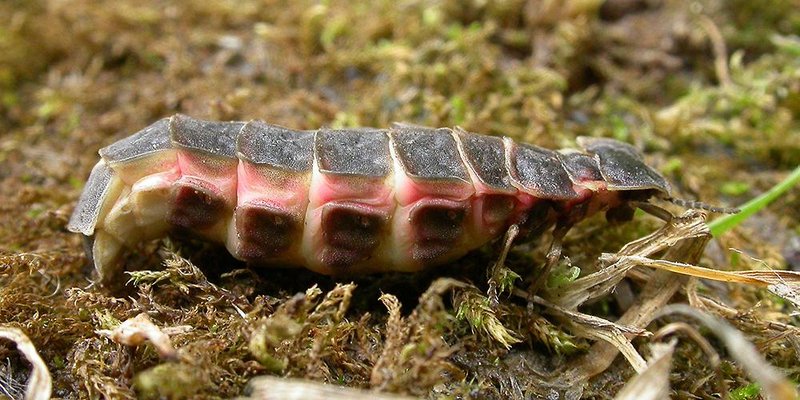
Identifying glow worm species in your region can be a delightful journey. Each glow worm has its unique characteristics, habitat preferences, and behaviors. While it may seem daunting at first, let’s break it down step by step. By understanding what to look for, you’ll be equipped to enjoy and appreciate these captivating creatures more fully. So, grab a cozy blanket, and let’s explore the fascinating world of glow worms together!
What Are Glow Worms, Anyway?
Let’s start with the basics. You might be wondering: what exactly are glow worms? They aren’t worms at all! These creatures are actually the larvae of various beetle species (like the firefly) or adult moths, depending on where you are in the world. What makes them special is their ability to produce bioluminescent light, which is their way of attracting mates or luring prey. Think of it as their very own glow-in-the-dark tactic!
Each species gives off light for different reasons—some use it to attract mates, while others lure unsuspecting insects into their sticky silk threads. The light they emit can be blue or green, depending on the species, and it can be mesmerizing to watch, especially in the dark. It’s like catching a glimpse of magic every time you spot them.
In your backyard, you might find glow worms that glow bright green, while in a local national park, you could spot species that emit more bluish lights. Understanding these variations can enhance your appreciation of nature’s artistry.
Where Can You Find Glow Worms? Exploring Their Habitats
Glow worms prefer specific environments that offer the right conditions for their survival. Typically, you can find them in damp, shaded areas like forests, caves, and along riverbanks. They thrive in moist, dark habitats where they can develop and grow undisturbed.
If you’re planning to seek them out, look for locations that have plenty of leaf litter, as many species love to hide in the debris. Caves and overhanging rock shelves are other popular spots because they provide the dark and damp atmosphere that glow worms adore.
Timing is also crucial. Most species are more active during the warmer months, typically from spring to late summer. Going out on warm, humid evenings is your best bet. Grab a flashlight (but be careful not to shine it directly on the worms) and enjoy the wonder of nature!
Identifying Glow Worm Species by Their Color and Light Patterns
Here’s where it gets really interesting! Not all glow worms are created equal. One of the easiest ways to identify different species is by observing the color and pattern of their glow.
Different species can emit light in various hues—some shine a bright green, while others might have a bluish tinge. Also, the intensity and pattern of the light can vary. For instance, some species emit a steady glow, while others may flicker or pulse.
When observing them, look for:
- Color: Is it blue or green?
- Intensity: Does the glow seem strong or faint?
- Pattern: Is it a steady light, or does it flicker?
Taking notes or even snapping a few photos can help you compare them later. It’s like being a detective in the glow worm world!
Common Glow Worm Species and Their Unique Traits
Let’s talk about some of the most common glow worm species you might encounter, depending on your region. Each one has its quirks and characteristics that make it special.
1. **Lampyridae Family (Fireflies)**: Found in various regions, these glow worms are known for their bright green light and are often seen in gardens and forests. They produce a steady glow that attracts mates.
2. **Arachnocampa (New Zealand Glow Worm)**: This species is famous for its beautiful blue glow. Typically found in caves, they create silk threads to trap prey. If you ever visit New Zealand, their glow worms are a must-see!
3. **Phengodes (American Glow Worms)**: These are mainly found in North America and can vary in color from yellow to green. They tend to be less visible but are equally fascinating, as they glow when disturbed.
Understanding these species’ behaviors and habitats can make spotting them even more rewarding. It’s like being an explorer in your own backyard!
How to Observe and Appreciate Glow Worms Responsibly
As beautiful as glow worms are, it’s essential to approach them with care. These delicate creatures can be sensitive to light and disturbances, so being respectful is key. Here are some tips for enjoying their glow without causing harm:
– **Keep Your Distance**: Use a red flashlight if you need light, as it’s less disturbing to them. Avoid shining bright lights directly at them.
– **Stay on Trails**: While exploring, stick to marked paths to protect their natural habitats. Stepping off the trail can damage the delicate ecosystem they thrive in.
– **Educate Others**: Share your newfound knowledge with friends and family. The more people understand the importance of preserving these habitats, the better!
By observing responsibly, you help ensure that future generations can enjoy the glow worms’ magic too.
Identifying glow worm species in your region can be a delightful and educational experience. With a little patience and observation, you’ll soon become an expert in spotting these fascinating creatures. Whether you’re out on a hike, or just exploring your backyard at night, remember to appreciate the wonder of their glow.
By understanding their habitats, characteristics, and how to observe them responsibly, you can enrich your encounters with these magical larvae. So next time you see a soft glow in the dark, take a moment to enjoy the beauty of nature’s little light shows. Happy exploring!
